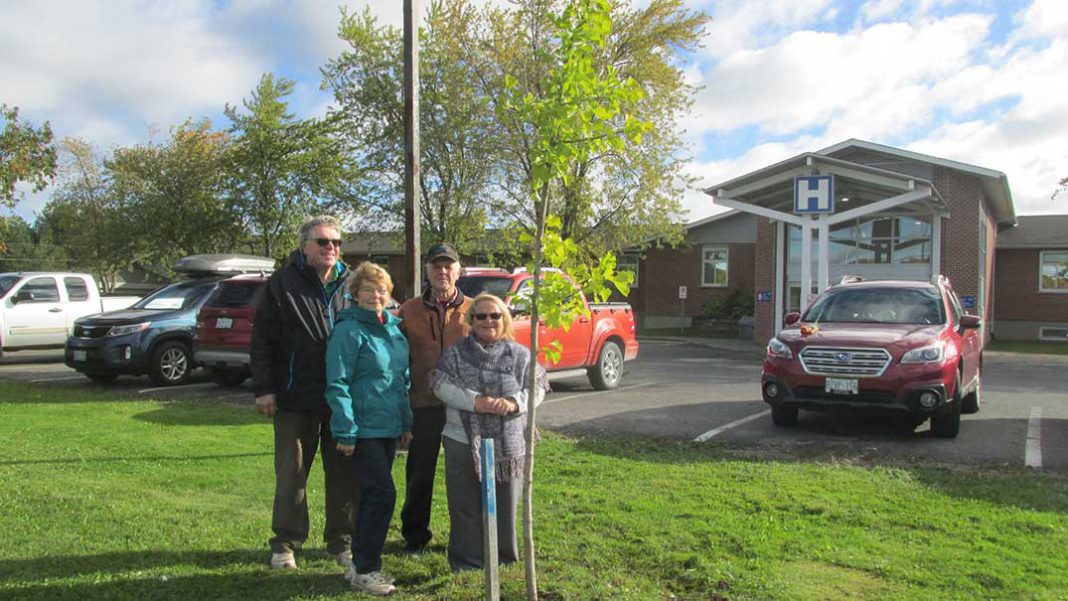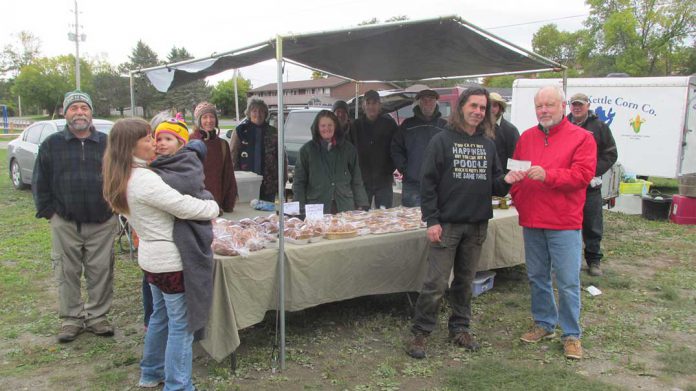MINDEMOYA—The Ginkgo, or maidenhair tree is a long-time survivor, much like the Campbell Horticultural Society (CHS), which has been in existence for the past 90 years. A Ginkgo tree was planted in a location on the front lawn of the Mindemoya Hospital last Thursday morning.
“Every year the Ontario Horticultural Society Association awards a grant of $200 to 20 societies across Ontario to plant a tree,” said Seija Bailey, vice-president of the Campbell Horticultural Society. “This year we received one of the grants to commemorate the 90th anniversary this year of our group.”
“We chose this type of tree because it is a surviving tree, having been around 270 million years including surviving,” continued Ms. Bailey. “We wanted to plant the tree near the hospital as there are a lot of survivors-patients that are cared for in the hospital.”
“I want to thank Seija and Wayne Bailey for their volunteer work in researching the type of tree we could plant here,” said Sandra Strong, president of the CHS.
The Ginkgo tree, “is a health aid in natural medicine so in my mind it was a perfect choice,” said Ms. Strong. “And you can make tea out of the leaves of the tree, which helps with memory retention. It is a very symbolic tree as well as being very practical.”
The leaves of a Ginkgo, with their shiny, leathery thickness and simple pleasing shape, leave a lasting impression, like those of the tulip tree. Unlike those that prefer to grow in their native habitats, the Ginkgo is adaptable. It can be found growing happily next to bus routes or marooned in a sidewalk planting. In the home garden it starts out looking lean and hungry but develops into a tree of majestic proportions.
Ginkgo eventually becomes a large tree that is listed as a specimen tree in parks and large gardens. It grows 15-30 centimetres (50-100 feet tall) with an equal or greater spread. The leaves can turn an attractive shade of yellow in fall, after a few cool nights.
The Ginkgo survived Hiroshima. Ginkgo appears to have been saved from extinction by its long-time use in Asian temple gardens. Today this ‘living fossil’ grows almost entirely in horticultural settings.





